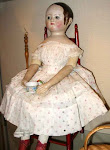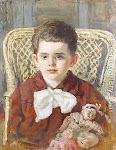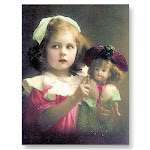In 1998, a German company was given permission to excavate the wreck of a 9th-century Arab trading ship that was discovered off the coast of the island of Belitung in Indonesia. It proved to contain an archaeological treasure trove.
With the wreck of the sunken vessel were found 60,000 pieces of rare Chinese porcelain. The collection became known as the Tang Treasure. The Tang Treasure was identified as having been produced in kilns in what is now the Chinese province of Hunan. It was probably intended for export to Malaysia, India and Arabia.
The Tang Treasure includes blue and white porcelain, tricolored glazed pottery from the Tang dynasty, and three early Qinghua plates, the best preserved of their kind ever found. Inscriptions found on some of the pieces suggest that the pottery was produced and transported in the early 9th century, and carbon dating has confirmed this.
 Hard-paste or "true" porcelain originated in China during the T'ang dynasty (618-907 A.D.).Early Chinese porcelain consisted of kaolin (china clay) and pegmatite, a coarse type of granite. Porcelain was unknown to European potters prior to the importation of Chinese wares during the Middle Ages.
Hard-paste or "true" porcelain originated in China during the T'ang dynasty (618-907 A.D.).Early Chinese porcelain consisted of kaolin (china clay) and pegmatite, a coarse type of granite. Porcelain was unknown to European potters prior to the importation of Chinese wares during the Middle Ages.
Europeans tried to duplicate Chinese porcelain, but, unable to analyze its chemical composition, they could imitate only its appearance. European craftspeople tried combining clay and ground glass. These alternatives became known as soft-paste, glassy, or artificial porcelains. Finally In 1707 they succeeded by combining clay with ground feldspar instead of the ground glass previously used.Later in the eighteenth century the English further improved upon the recipe for porcelain when they invented bone china by adding ash from cattle bones to clay, feldspar, and quartz.
KPM Berlin porcelain painting plaques:
 “The Melon Eaters” after a painting by Murillo, with two boys seated next to a basket of fruit, one boy eating a slice of melon with his companion and a dog looking on.
“The Melon Eaters” after a painting by Murillo, with two boys seated next to a basket of fruit, one boy eating a slice of melon with his companion and a dog looking on.
 A porcelain painting of rectangular form, the body with the polychrome painted scene "Niobe" the reverse side with title, on the lower right signed: L. Enk, KPM-Berlin, impressed sceptre and K. P. M., H, 1908 (Ru)
A porcelain painting of rectangular form, the body with the polychrome painted scene "Niobe" the reverse side with title, on the lower right signed: L. Enk, KPM-Berlin, impressed sceptre and K. P. M., H, 1908 (Ru)
"Niobe," Greek Mythology. In the above scene, Apollo and Artemis revenge the insult to Leto by slaughtering Niobe's 12 children, the Niobids, with their arrows and petrifying Niobe in the form of a rock in the Sipylos Mt. where since then her tears are said to gush forth.
The China Dolls:
 Although porcelain is used as a synonym for china, the two are not identical. China, also known as soft-paste or tender porcelain, is softer: it can be cut with a file, while porcelain cannot. This difference is due to the higher temperatures at which true porcelain is fired. Due to its greater hardness, porcelain has some medical and industrial applications which china, limited to domestic and artistic use, does not. Moreover, whereas porcelain is always translucent, china is opaque.
Although porcelain is used as a synonym for china, the two are not identical. China, also known as soft-paste or tender porcelain, is softer: it can be cut with a file, while porcelain cannot. This difference is due to the higher temperatures at which true porcelain is fired. Due to its greater hardness, porcelain has some medical and industrial applications which china, limited to domestic and artistic use, does not. Moreover, whereas porcelain is always translucent, china is opaque.
 Kister china lady head ca. 1840 The hair is softly waved on the sides of the head and pulled into a bun on the back of the head.
Kister china lady head ca. 1840 The hair is softly waved on the sides of the head and pulled into a bun on the back of the head.
 KPM boy has a side part in his hair, the nose turns up slightly on the end. ca. 1840-1844
KPM boy has a side part in his hair, the nose turns up slightly on the end. ca. 1840-1844

Throughout recorded history, images of women far outnumbered images of men. Busts and statues of ancient Greece and Roman women dominate art museums. In the doll world, dolls representing women outnumber their male counterparts.
 "A Night at the Opera" Margaret Whitton Collection ca. 1840
"A Night at the Opera" Margaret Whitton Collection ca. 1840Although bone china is fired at lower temperatures than true porcelain, the bone ash enables it to become translucent nonetheless. Because it is also easier to make, harder to chip, and stronger than hard porcelain, bone china has become the most popular type of porcelain in the United States and Britain (European consumers continue to favor hard porcelain).
 Old broken raw model (front and back) from which the doll featured below, "Miss Liberty" could be identified.
Old broken raw model (front and back) from which the doll featured below, "Miss Liberty" could be identified. 
Reflection shows hair lavishly styled at the back of the head and entwined with a black hair band.
 This doll because of the similarities with the head of the Statue of Liberty in New York is called "Miss Liberty" Shoulder head made of very pale bisque - hair style adorned with a gold luster diadem ca. 1875
This doll because of the similarities with the head of the Statue of Liberty in New York is called "Miss Liberty" Shoulder head made of very pale bisque - hair style adorned with a gold luster diadem ca. 1875  The Herwig porcelain factory in Katzhutte, Thuringia. The building on the left is filled with large holes, from which scavengers have pried Hertwig plaster molds to make reproduction porcelain products.
The Herwig porcelain factory in Katzhutte, Thuringia. The building on the left is filled with large holes, from which scavengers have pried Hertwig plaster molds to make reproduction porcelain products.
 Chinese porcelain represented wealth and taste in 17th century Europe. Augustus the Strong of Dresden and Meissen in the German state of Saxony, sponsored the research into the development of white porcelain similar to that imported from China in the early 1700s. Meissen used the Chinese method of a single firing by glazing the initially formed piece and then firing the combination at 1350 degrees C. Meissen was in commercial production by 1713. and by the 1720s the enamels and detail style of Meissen fully developed.
Chinese porcelain represented wealth and taste in 17th century Europe. Augustus the Strong of Dresden and Meissen in the German state of Saxony, sponsored the research into the development of white porcelain similar to that imported from China in the early 1700s. Meissen used the Chinese method of a single firing by glazing the initially formed piece and then firing the combination at 1350 degrees C. Meissen was in commercial production by 1713. and by the 1720s the enamels and detail style of Meissen fully developed.


Style of the porcelain was borrowed from the original Chinese, from paintings by Watteau, court scenes, landscapes, flowers etc. While the recipe was a closely guarded secret, as all secrets, it was soon leaked. In order to identify the original Meissen products, Meissen developed markings that initially were painted on, but were soon fired in underglaze blue. Early markings were eventually replaced by the crossed swords logo. Introduced in 1720, it was used consistently after 1731 by official decree. Variations in the "crossed swords" logo allow approximate dating of the wares. Caution must be exercised, as Meissen is one of the most copied porcelains.
 The lady's head features a long, swan-like neck, brown down cast painted eyes, distinct dimples in chin and highly blushed cheeks, and the palest of cream colored wavy hair, off the shoulder and neck, with a very high forehead, almost in the style of Elizabeth the First of England.
The lady's head features a long, swan-like neck, brown down cast painted eyes, distinct dimples in chin and highly blushed cheeks, and the palest of cream colored wavy hair, off the shoulder and neck, with a very high forehead, almost in the style of Elizabeth the First of England.

One usually finds these heads as objects other than complete dolls, so it is rare to find one complete and assembled as an actual doll such as we find these examples. They have very nice firmly stuffed muslin bodies, long delicate porcelain arms with elegantly detailed blushed fingers and individual fingernails, and most intriguingly, the most unusual ( if not even bizarre ) molded white china boots with blue striped patterns with slightly raised heels and painted brown soles.
 The immovable shoulder heads of Nymphenburg dolls have a peculiar hair style, high forehead with downward looking eyes and a touch of an amusing smile. Their placid countenance reminds me of figures from a manger scene.
The immovable shoulder heads of Nymphenburg dolls have a peculiar hair style, high forehead with downward looking eyes and a touch of an amusing smile. Their placid countenance reminds me of figures from a manger scene.
Dresden:
Today this action remains one of the more controversial Allied actions of the Western European theater of war.
The single key point in identifying products from one of these three companies is they always marked their products. KPM Berlin, KPM Meissen and Royal Copenhagen porcelain dolls are always marked with the company signature. If a doll is unmarked then it was not made by one of these companies.













































.jpg)









































































Good morning, Marta-
ReplyDeletethank you for this lesson in China dolls :-))
It´s very interesting... Some are really, really beautiful. I have some single figures and groups like that Dresden figure group. I should make some photos for a post, to show you :-)
The story is really intersting! I remember, that my grandma always said: Ines- you have a swan-like neck:-) Long time ago...
Those Nymphenburg dolls are really beautiful, too... and Meissen China is really wonderful, too...
Thank you for showing and for sharing your knowledge!
Enjoy your day-
Love, Ines
That is such an interesting post. Just as an aside I have several pieces from that wreck and several reproduction (done very well from China) Tang horses. But I learnt a lot. Many thanks.
ReplyDeleteImpresionantes esas china dolls, Marta! Tienen unas caras preciosas. Not to mention the clothes! Me encantan.
ReplyDeleteY la historia y las fotos del Chinese treasure... Tengo una figura de un material sintético, de un caballo como esos. No sabía com pintarlo y decorarlo. Me has dado ideas!
Muy interesante, Marta! Gracias.
Besos.
Thank you Inez, Hermes...This post was a lot of fun to put together. The more I researched I kept finding interesting things to write about. The T'ang Dynasty segment was added at the last moment. I just thought it was such an important find, it had to be part of the story.
ReplyDeleteBig hugs to both
Marta
Gracias Alberto....Me encanta que te guste el post. Pace muchas horas fascinantes colectando data sin hacerle caso al reloj! Tanto que Tomas se fue a dormir solo, cansado de llamarme a la cama. LOL!
ReplyDeleteMuchos gracias por tu comentario...Me imagino el caballo te quedara bello! Quiero ver fotos cuando lo termines.
Muchos besos
Marta
Realmente Marta tienes una cultura tremenda, qué análisis mas completo sobre la porcelana. Yo tengo un juego de té que recibí de mi madre hecho de una porcelana casi trasparente. Tu historía me lo ha recordado.
ReplyDeleteSaludos
Muchas gracias Julian, me halagan mucho tus comentarios. La realidad son las horas que paso feliz, indagando y leyendo sobre lo que es una pasion para mi..."Las muñecas antiguas, y la historia." Es un placer, que artista genial como tu, encuentre interesante mi blog.
ReplyDeleteMuchisimas gracias y cariños
Marta
Such a bad wife! dejar que Tomas se fuera a la cama solo... Shame on you! Oliver se enfada también muchísimo conmigo cuando no dejo el ordenador a altas horas de la madrugada. Y eso que no es mi marido! En lugar de hermanos, cada vez parecemos más un matrimonio! ¿Existe el divorcio de hermanos en USA?
ReplyDeleteNos enseñas muchas cosas bonitas e interesantes con tus posts. Gracias!
By the way, you look beautiful with your new haircut! But I'll miss the Marta doll photo. Doy gracias por haberla guardado hace tiempo.
Besos!
Gracias cariño...un besote muy grande...Estoy buscando pinturas de peinados Victorianos, que te van a encantar, para el proximo post.
ReplyDelete¡Estoy deseando verlo! Thank you so much!
ReplyDeleteMás besos para ti!
Hi Marta, Thank you for stopping by. I luv the collection of antique pottery. But I like the miissen cherubs they are cute. Have a great weekend...Julian
ReplyDeleteHola Marta!!!
ReplyDeleteHe dedicado un largo tiempo a leer los últimos cuatro post y realmente estoy maravillada con los mismos.
Es un aprendizaje continúo la investigación que realizas.
Mis felicitaciones y agradecimiento por la dedicación!!!!
Un abrazo!!!
Gosh, what an interesting post, you make such a lovely job of telling us all about it.Thankyou so much,
ReplyDeleteSusie
Gracias Maria Cristina! Me encanta la investigacion porque la historia me apasiona. Pero que me emociona tener fieles seguidores como tu.
ReplyDeleteGracias por interesarte tanto en my humilde blog.
Besos.
Dear Susie...Thank so much for your sweet comments! Its my pleasure to work on this blog. I love every minute I spend researching.
ReplyDeleteI am so glad you enjoy it!
Bisous
i have a friend who had a doll from ealry 1800 i think it has ont he back of her neck 45 athena does anyone know about this doll my email is faithstarblue@yahoo.com my name is gerrie she is wearing a green dress her hair is braided in the froont pulled back an in a tinny bun in the back shes still in the box any info i would be thank ful for gerrie
ReplyDeleteHi Gerrie,
ReplyDeleteYou are not giving me enough to go by. A picture of the doll would be great. Is it China, Parian or Bisque? Some China Dolls from the early 20th century had names (Pet Names) painted in gold luster on their dress' bodice,eg. Ethel, Agnes.
Athena is not a manufacturer that I am aware off. Are you sure this is not a Reproduction doll.? There are many on the market, that unless you are an expert, you couldn't tell.
Best Regards
Marta
can u tell me about this doll? She has flat black glazed hair. No strands or texture, just a black painted "bowl cut". You can feel the line around the head. Mayb its a boy? One eyebroe is a lil highet than tje other. Pink cheeks, big black pupils with two white specks to look bright eyed.or stary eyed. The part thats usually white of r eyes is pink. No upper eyelashes painted, just a lid crease and painted lower lasges with light blue "eye shadow" around the eyes more so on the bottom. 3 sew holes on back with an M etched on the bottom center of shoulder blade. Cloth body. China arms sewn on at elbow and china leg attached below knee, id say halfway up the calf. Its amazing. Please email me & illl send pics..
ReplyDeleteThanku
shanyn